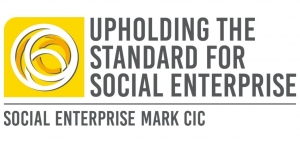Harness the power of your brand
 By Jonathan Alder, founder and Co-Director of Alder and Alder
By Jonathan Alder, founder and Co-Director of Alder and Alder
Your brand is a powerful communication tool that has the potential to differentiate you from competitors, and make you interesting and relevant to your audience. If you can harness the power of your brand it will give you the opportunity to influence what people think and how they behave. It will give you the power to change things.
And there is a need to change things. Existing models are struggling to adapt to the new demands that business and society is placing upon them. Change is all around us, and undoubtedly brings challenges, but it also brings opportunities. It brings the opportunity to do something different. Something new. Something better.
Social enterprises have the opportunity to be the change and bring the solution. But to win a new audience you have to explain why you are the solution.
As a social enterprise your brand is a particularly powerful tool. At the heart of each organisation is a ‘purpose’ – the reason they exist. This is the foundation of every brand. In commercial businesses ‘purpose’ can get lost, because the focus is often on making money, rather than making a difference. This is where the opportunity for social enterprise emerges. As a social enterprise it’s ALL about making a difference, and that’s attractive, not just to your stakeholders, but to the wider community.
Brand building can seem a daunting prospect, but breaking the process down into stages can make it much easier to manage. I’ve identified three stages that provide a practical approach to harnessing the power of your brand.
- The first stage is Brand Definition. Social enterprises need to clearly articulate the advantages their model can offer to each stakeholder group they engage with, when compared to the existing solutions available. For organisations that are selling a service or product to customers, differentiating a social enterprise approach from the commercial model of competitors can be even more important, as the trend for values-driven purchasing continues.
- Brand Design, the second stage, is focused on the tools an organisation will need in order to communicate with stakeholders. Engaging, persuasive, powerful communication is fundamental to influencing how your audience behaves, especially when you are offering something new or different. The quality of your visual communication will help you to compete more effectively against, what some stakeholders might consider, more ‘professional’ commercial competitors.
- The final step is to bring your brand to life. I call this stage Brand Delivery. Society is looking for change, but they don’t necessarily know where to find it. If you have an alternative solution you need to take it to your stakeholders and present it as a viable option, not some kind of worthy compromise. You will need to find an effective and efficient way to deliver your message, whether that is in print, in person or online.
The business sector – and society at large – is experiencing change and uncertainty. People are frustrated and looking for alternative solutions. This is the opportunity for social enterprise to move from a niche model to the mainstream. But to achieve that transition social enterprises need to communicate clearly. It’s time to harness the power of your brand, and build one that helps you to define, design and deliver your message.
If you would like to learn more about how to harness the power of your brand, I’ve written a guide to branding for social enterprises, Time For Change.






